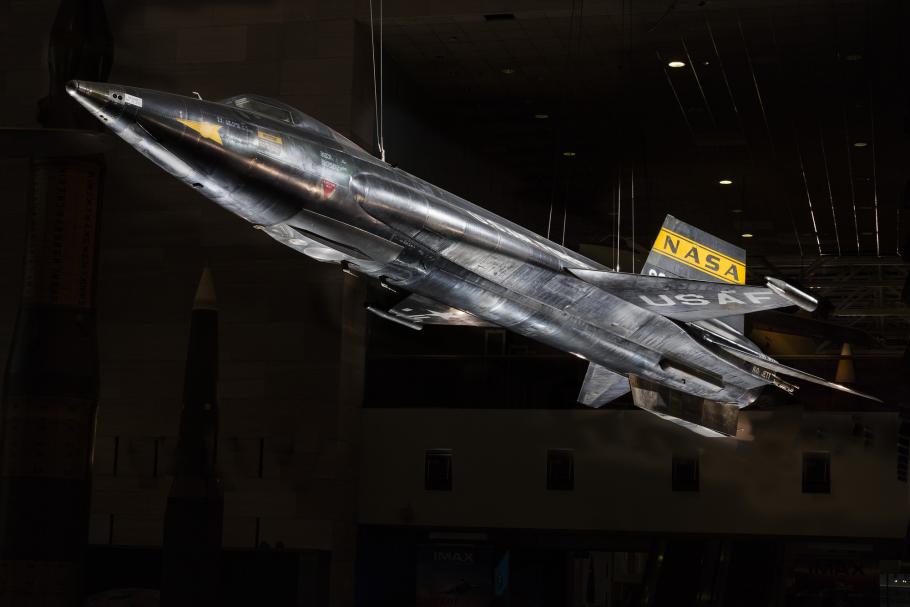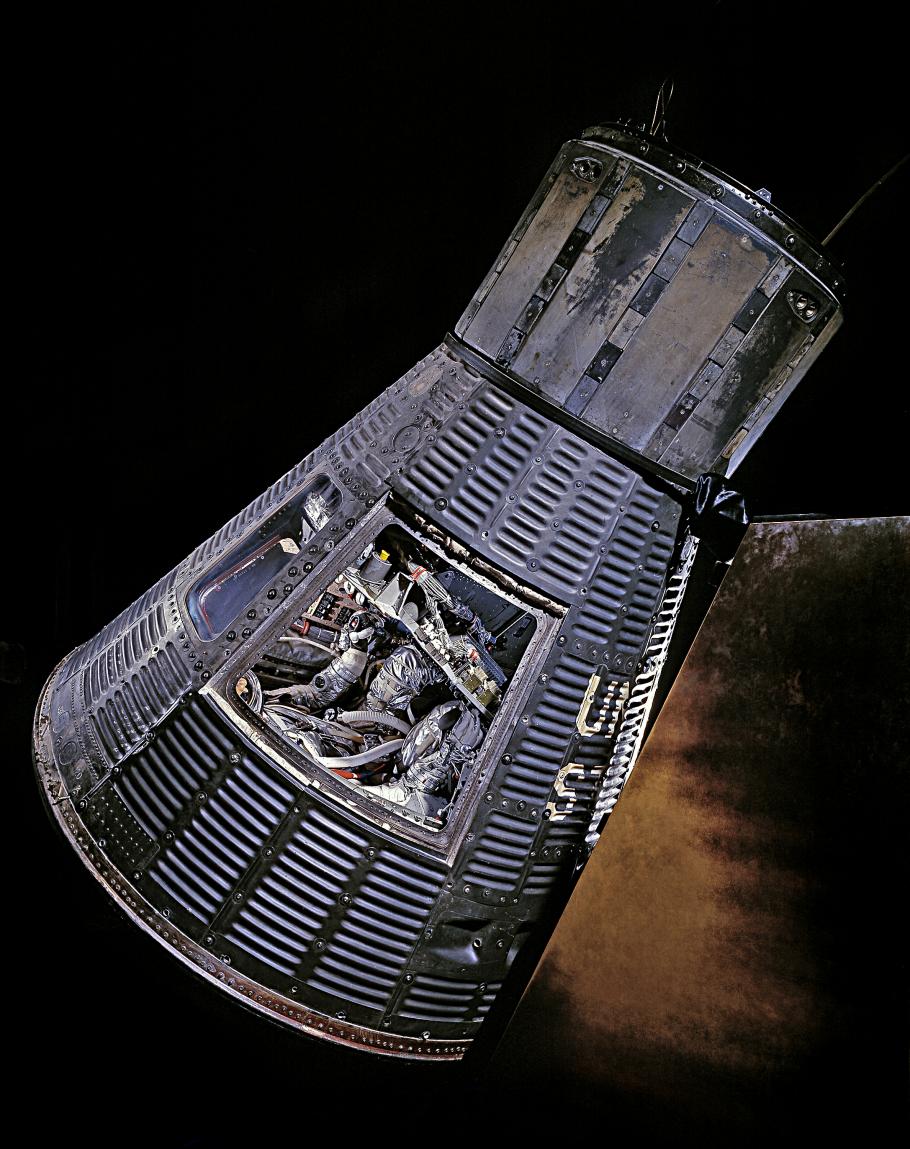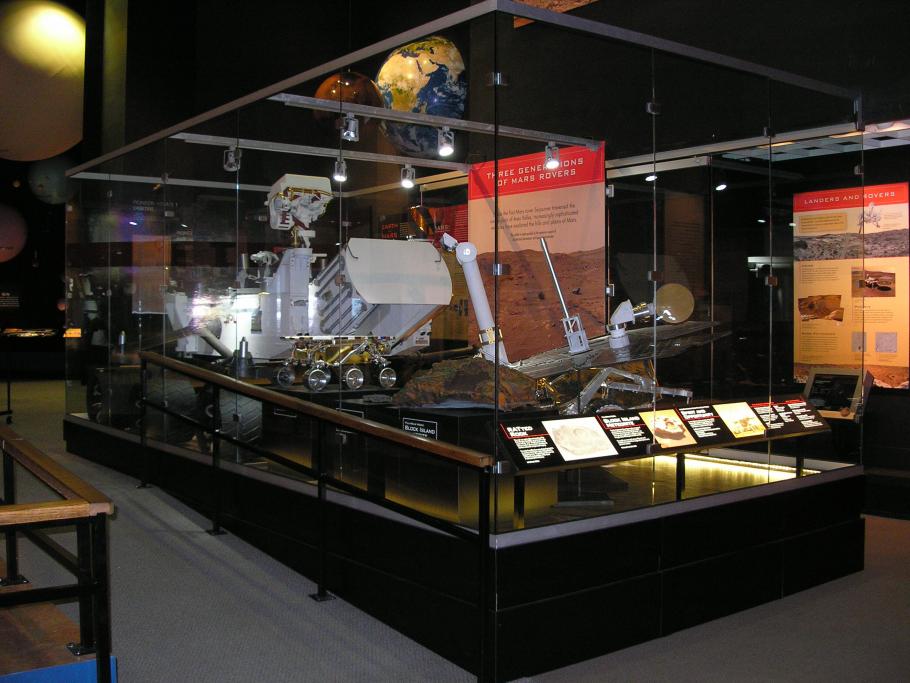On October 1, 1958, the National Aeronautics and Space Administration was officially created, beginning a 60-year journey of American innovation and space exploration. While there are many (many, many!) unique NASA objects in the Air and Space collection, these six highlight milestones that shaped our nation’s quest to better understand our universe.
Explorer-1
Explorer-1 was the United States' first successful orbiting satellite and (slightly) pre-dates NASA itself. In January 1958, less than three months after the Soviet Union launched Sputnik into orbit, Explorer was launched, marking America’s entry into the Space Race. The satellite—containing a cosmic ray detector, a radio transmitter, and temperature and micrometeoroid sensors—was built at the California Institute of Technology’s Jet Propulsion Laboratory. A few months after Explorer’s launch, NASA was founded, and JPL became a part of the new space agency.
North American X- 15
The X-15 rocket-powered research aircraft gathered critical flight data that made human spaceflight possible. It bridged the gap between flight within the atmosphere and flight in space.
After completing its initial test flights in 1959, the X-15 became the first winged aircraft to achieve record-breaking Mach 6 speeds, traveling six times the speed of sound. In fact, NASA engineers seriously considered using a version of the X-15 for its crewed orbiting missions. Among the 12 pilots who flew the X-15 were future Apollo 11 commander Neil Armstrong and Space Shuttle astronaut Joe Engle.
Mercury Friendship 7
Mercury "Friendship 7" on display in the Boeing Milestones of Flight Hall at the Museum in Washington, DC.
In this historic capsule, John Glenn became the first American to orbit the Earth, demonstrating the US could compete with the Soviet Union in the Space Race.
Glenn's 1962 flight was the third crewed mission of Project Mercury, following two suborbital flights by astronauts in 1961. The seat that John Glenn sat in for the mission was custom made to fit him. The capsule was a tight fit—the astronauts joked that “you don’t get in it, you put it on.”
Apollo Lunar Module
The lunar module is a two-part spacecraft specially designed for landing and taking of from the Moon. Discover this last piece of the puzzle about how to get to and from the Moon.
The Apollo Lunar Module represents one of humanity’s greatest achievements: landing humans on another heavenly body. Built for NASA by Grumman Aircraft Engineering Corporation, the lunar module is a two-part spacecraft specially designed for landing and taking off from the Moon. The lunar module was the last piece of the puzzle for how to get a human safely to the Moon’s surface and back again.
Space Shuttle Discovery
Flying more missions than any other shuttle, Discovery carried out every type of mission NASA had to offer. The shuttle flew 39 times and spent a total of 365 days in space in its 27 years of service. Along the way, Discovery checked off many milestones in spaceflight:; it flew missions to deploy the Hubble Space Telescope, made the first shuttle visit to the Russian space station Mir, and brought NASA’s first woman female space shuttle pilot and first African American Shuttle Commander to space (among many other groundbreaking explorers).
Mars Rover Curiosity
Full-scale models of three Mars rovers are on display in the Exploring the Planets exhibition at the Museum in Washington, DC. Visitors can see the models of Sojourner Flight Spare, Spirit and Opportunity, and Curiosity.
The Mars Science Laboratory, a rover called Curiosity, successfully landed on Mars on August 6, 2012, after nearly a year traveling from Earth. The size of a small car, the nuclear-powered Curiosity uses its cameras, spectrometers, radiation detectors, and other instruments on its mission to explore Mars’ Gale Crater.
This rover is the first full-scale astrobiology mission to Mars since the Viking landers of 1976. Having followed the water, and found evidence of it, Curiosity now seeks to answer a big question: if Mars could have supported—or might still support—life. Curiosity continues to explore and collect scientific data on Mars today.
You can explore these objects throughout our Museum in Washington, DC and our Steven F. Udvar-Hazy Center in Chantilly, Virginia.



